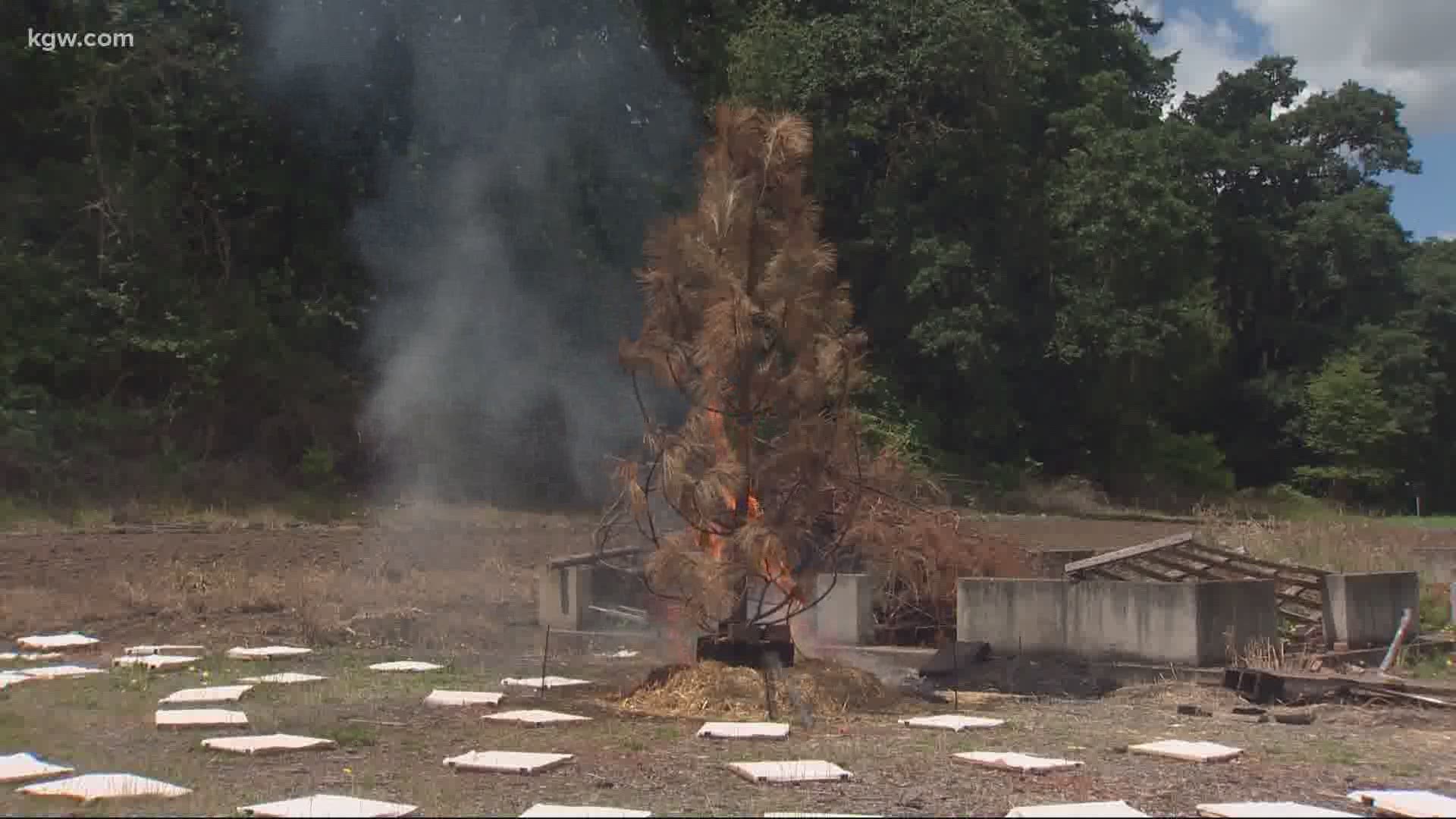ALBANY, Ore. — Oregon State University researchers are conducting a unique study setting up real trees and then setting them on fire.
"What we are doing is, we are measuring the total number of embers that are released when you burn a tree," said David Blunck, an associate professor of mechanical engineering at Oregon State University.
It's fairly common knowledge when trees burn they give off embers. And those embers can quickly start other fires. Knowing how many embers a type of tree gives off, and just how far they travel, can be crucial when it comes to predicting the potential spread of a forest fire.
The researchers say this information can also be used in models to predict where fires will spread.
"You think about where people put resources, where you put houses, how you protect human lives, all those are tied in to being able to predict where they go," said Blunck.
It may also help homeowners decide what trees to plant around their homes. For example, the study found Ponderosa Pines do not produce a lot of hot embers. Junipers on the other hand give off a lot.
"Juniper, for example, I wouldn't want to have them planted by my house," said Blunck.
The trees being burned in this study are from Oregon State University's research forest and the researchers say these trees needed to be thinned anyway. "It's a win for them and it's a win for us," said Blunck.
A chance to study in real-time, with real trees, how wildfires really behave.

